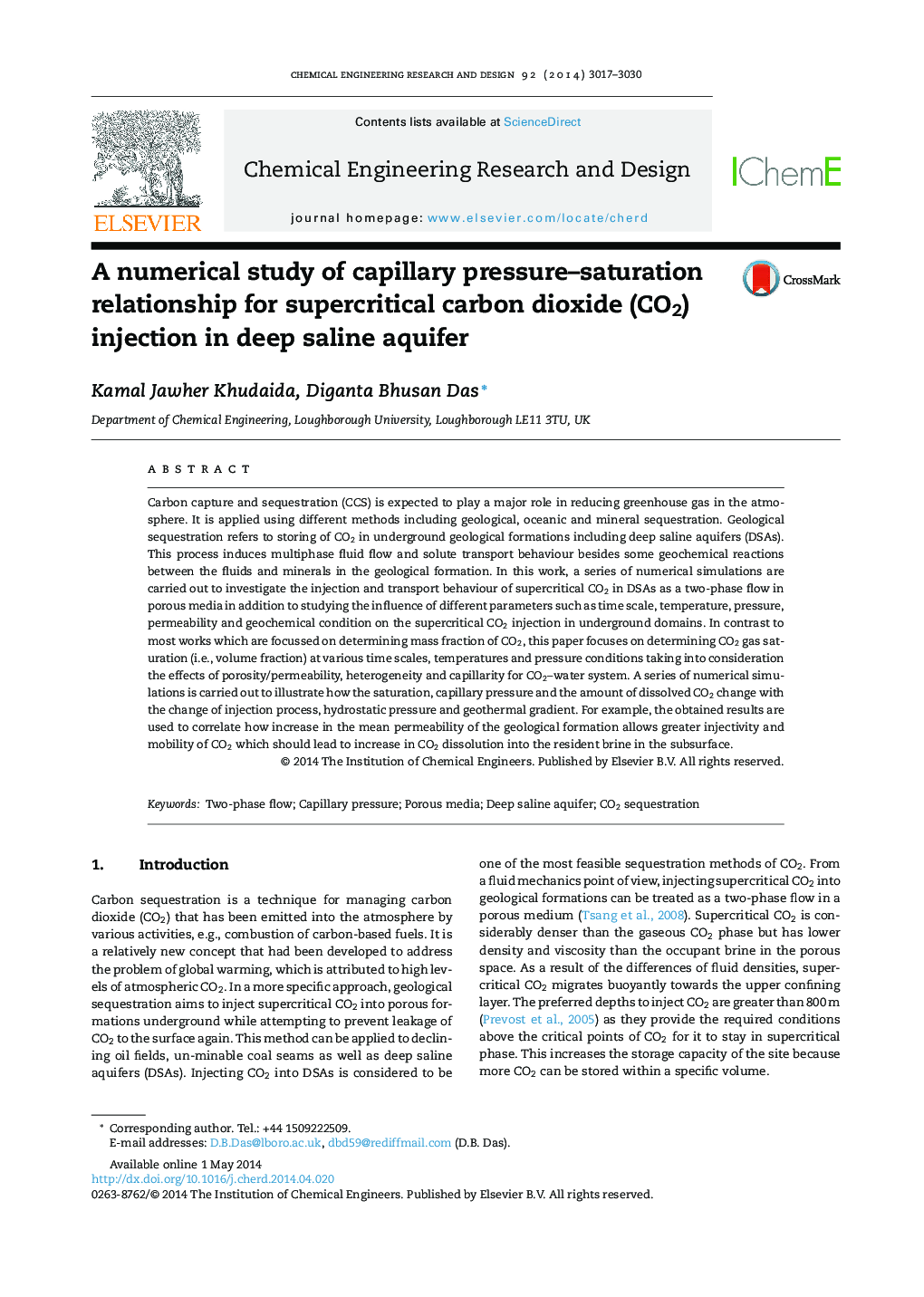| Article ID | Journal | Published Year | Pages | File Type |
|---|---|---|---|---|
| 620960 | Chemical Engineering Research and Design | 2014 | 14 Pages |
•Simulation is done to investigate transport of supercritical CO2 in deep saline aquifer.•The simulation is based on the principles of two-phase flow in porous media.•Effects of parameters which determine CO2 injection patterns are determined.•In contrast to work determining CO2 mass fraction, CO2 gas saturation (i.e., volume fraction) at various conditions is obtained.•Dynamic capillary pressure effect during CO2 flow is considered.
Carbon capture and sequestration (CCS) is expected to play a major role in reducing greenhouse gas in the atmosphere. It is applied using different methods including geological, oceanic and mineral sequestration. Geological sequestration refers to storing of CO2 in underground geological formations including deep saline aquifers (DSAs). This process induces multiphase fluid flow and solute transport behaviour besides some geochemical reactions between the fluids and minerals in the geological formation. In this work, a series of numerical simulations are carried out to investigate the injection and transport behaviour of supercritical CO2 in DSAs as a two-phase flow in porous media in addition to studying the influence of different parameters such as time scale, temperature, pressure, permeability and geochemical condition on the supercritical CO2 injection in underground domains. In contrast to most works which are focussed on determining mass fraction of CO2, this paper focuses on determining CO2 gas saturation (i.e., volume fraction) at various time scales, temperatures and pressure conditions taking into consideration the effects of porosity/permeability, heterogeneity and capillarity for CO2–water system. A series of numerical simulations is carried out to illustrate how the saturation, capillary pressure and the amount of dissolved CO2 change with the change of injection process, hydrostatic pressure and geothermal gradient. For example, the obtained results are used to correlate how increase in the mean permeability of the geological formation allows greater injectivity and mobility of CO2 which should lead to increase in CO2 dissolution into the resident brine in the subsurface.
Graphical abstractFigure optionsDownload full-size imageDownload high-quality image (131 K)Download as PowerPoint slide
